Foreign copies of the Soviet C-75 air defense system (part of 3)
At the end of 70-x on the basis of design solutions implemented in the NQ-2 air defense system under construction, simultaneously with the work on the HQ-3 long-range complex with a liquid rocket, the multi-channel HQ-4 anti-aircraft complex with the anti-aircraft missile system that does not require refueling with liquid fuel and has been coated with an oxy-fuel complex NQ-4 developed. . It was assumed that the HQ-2 in the hardware will have much in common with the HQ-2 air defense systems, which will make it possible to use solid-fuel missiles as part of the complexes already in service. However, the chemical industry of China was unable to create a solid fuel formulation with acceptable characteristics. And an experienced multi-channel guidance station turned out to be too cumbersome, and its level of reliability did not inspire optimism. After analyzing the reasons for the failure, the Chinese leadership decided to start designing a mobile complex with solid-propellant rockets of shorter length but larger diameter than the missiles used in the HQ-1 SAM system. Initially it was assumed that the KS-2 air defense system with launchers based on off-highway trucks would have a high degree of continuity with the HQ-202. In particular, it was planned to use the existing command and control equipment on the new radio command missiles, and the missiles would be aimed at the target using the SNR SJ-2В that was part of the HQ-XNUMXJ air defense system.
Due to the lack of experience and the weakness of the Chinese electronic and chemical industry, the development of the KS-1 SAM system with solid-propellant SAM systems, designed to replace the aging HQ-2, was unacceptably long. According to Chinese data, the creation of KS-1 ended in the 1994 year. However, the first version of this anti-aircraft complex was never put into service in the PRC, nor was it followed by orders from foreign buyers. Approximately through 35 years after the start of development in 2009, PLA air defense troops delivered the first air defense missile systems with the “internal” designation HQ-12 (for export KS-1А). This complex, although it retained the external features of an early modification, already has little in common with HQ-2J. The entire element base HQ-12 is transferred to solid-state electronics, and the SJ-202В guidance station is replaced by a multifunctional radar with AFAR H-200. As part of the HQ-12 air defense system, not radio command, but missiles with semi-active radar seeker are used.
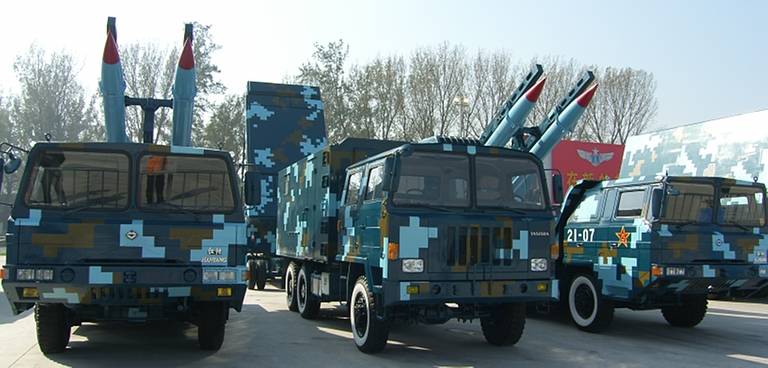
A typical battery of the HQ-12 complex includes a missile detection and guidance radar, six launchers on which in total there are 12 ready-to-use missiles and 6 transport-charging machines with 24 missiles. Although the NQ-12 air defense system is officially adopted, its production rate is not high. Several divisions are deployed in the depths of the territory of the People's Republic of China, in addition, buyers of export modification are: Myanmar, Thailand and Turkmenistan. In terms of range and altitude, HQ-12 roughly corresponds to HQ-2J. But its advantage is the use of solid-propellant rockets and high fire performance. At the same time, the complex created by the patterns of 70-ies, is morally obsolete, and therefore not received much distribution.
Based on the information published in Chinese sources and materials of Western military experts, it clearly follows that at the moment the PRC air defense system is in the process of large-scale rearmament. Whereas in the past the most important Chinese sites were covered by purchased in Russian long-range S-300PMU / PMU1 / PMU2 and private Hq-2 in the approximate proportions of 1 / 5, in recent 5-7 years, first-generation systems with liquid rockets are actively replaced own multichannel systems with vertical start HQ-9A and HQ-16.
Google Earth satellite image: HQ-2 air defense system deployed in 80 km south-west of Beijing. Date taken 10 October 2015 year
Thus, in the vicinity of Beijing, all HQ-2 air defense systems located closer to the coast are currently almost completely replaced by modern anti-aircraft missile systems. At the same time, the old positions, where Chinese versions of the seventy-fives were previously deployed, are being reconstructed, and hangars nearby are built to accommodate and protect from the weather larger elements of long-range anti-aircraft systems: self-propelled launchers, guidance and lighting stations, and control cabins.
Google Earth satellite image: HQ-9 SAMs on the former HQ-2 air defense system in 80 km south-west of Beijing. Shooting date 3 March 2017 of the year
Several divisions of the modernized HQ-2J survived to the north-west and south of the Chinese capital, but it appears that these complexes did not remain in operation for long, and they will soon be finally supplanted by modern multi-channel anti-aircraft missile systems.
In the 2018, official PLA publications were published notes that talk about the decommissioning of obsolete air defense systems. At the same time, photographs are presented in which Chinese servicemen are preparing anti-aircraft missiles and a guidance station for removal from a position.
Although the NQ-2 air defense system in the PRC is gradually being removed from service, they remain in service in a number of countries. Unlike the Soviet C-75 air defense complex, the HQ-2 supply geography was not so wide. The Chinese seventy-fives clones up to 2014 of the year protected the skies of Albania, which became a member of NATO in 2009. In the middle of the 80-x two missile and one technical division HQ-2A were transferred to Pakistan. Now, a Chinese-made anti-aircraft missile system has been deployed in a position near Islamabad. Given the close Sino-Pakistani cooperation, it can be assumed that the Pakistani air defense missile systems in 90-s have been upgraded to the level of HQ-2J.
As part of the Chinese military assistance in 70-80-s, several HQ-2 divisions equipped with JLP-40 airborne target radar stations and JLG-43 altimeters were delivered to North Korea. At the same time, the leader of the DPRK, Kim Il Sung, managed in parallel to receive military assistance, both from China and from the Soviet Union. So the last Soviet complexes С-75М3 "Volga" were sent to the DPRK in 1986 year. For a long period of time, the “seventy-fives” of Soviet manufacture and their Chinese clones carried combat duty in parallel. Currently, there are more than two dozen C-75 and HQ-2 air defense systems in the DPRK. Historically, the main part of the NQ-2 air defense system in the DPRK was deployed near the border of North Korea and China and covered the transport corridors connecting these countries.
However, based on publicly available satellite images, it can be concluded that the North Korean launchers of the C-75 and HQ-2 launchers are constantly not loaded with missiles. That, apparently, is due to the limited number of air defense missiles at the disposal of North Korean air defense forces.
The largest operator of the NQ-2 air defense system outside of China is the Islamic Republic of Iran. Before the Islamic Revolution, as a result of which Shah Mohammed Reza Pahlavi was overthrown in 1979, Iran was one of the closest allies of the United States. Thanks to friendly relations with Western countries and the availability of significant financial resources derived from oil exports, the Shah’s Iran procured the most modern weapons western production. In the second half of 70, the American company Raytheon supplied 24 batteries MIM-23 Improved HAWK, and the British Matra BAe Dynamics - the Rapier short-range SAM systems. Western experts helped link these anti-aircraft weapons into a single system. Obtained from the UK Rapier air defense system with the help of OMS SuperFledermaus combined with anti-aircraft 35-mm machine guns Oerlikon GDF-001. However, the Iranian shah tried to maintain friendly relations with the Soviet Union. In the 60-70-s from the USSR were obtained: ZSU-57-2 self-propelled self-propelled guns, towed 23-mm Sparky ZU-23, 37-mm assault rifles 61-K and 57-mm C-60, 100-mm anti-aircraft guns X-NUMX-K and 19-mm C-2, XNUMX-mm anti-aircraft guns -XNUMX and Strela-XNUMXM MANPADS.
However, after the overthrow of the Shah and the seizure in Tehran of the American Embassy, relations with Western countries were hopelessly damaged, and the Soviet Union, after the start of the Iran-Iraq war, chose to refrain from supplying modern weapons to Iran. In these conditions, after the repression and flight from the country of a significant part of qualified Iranian specialists trained in US and European military establishments and a significant part of the ammunition was consumed by the middle of 80, the Iranian air defense system fell into disrepair, and much of the existing anti-aircraft complexes and radars needed repair. Faced with a shortage of qualified technical personnel, the Iranian authorities were forced to return to the system the old personnel, and begin repairing the failed equipment on their own. At the same time, the problem of lack of spare parts was solved in several ways. The manufacture of parts that could be made on site was launched by the Iranian industry, and the most sophisticated electronic components, anti-aircraft missiles and their individual components were attempting to be illegally purchased abroad. So in the early to mid-80-x a certain number of spare parts and missiles for the American air defense systems "Hawk" was secretly purchased in Israel and the United States. For illegally obtained funds, the CIA funded the subversive activities of the Nicaraguan Contras. After it became public, a scandal erupted in the United States that led to serious political complications for the Ronald Reagan administration, and the channel of illegal supplies was stopped.
Since the United States and the Soviet Union refused to supply high-tech weapons, the Iranian leadership turned to China for help. The collaboration turned out to be mutually beneficial. Iran got access, albeit not to the most modern, but quite efficient weapon, and to China, which experienced considerable economic difficulties at the beginning of 80, as a payment for the equipment, weapons and ammunition supplied, Iranian oil was supplied at a preferential price.
In the middle of 80-x, the first group of Iranian military set off to the People's Republic of China, which was to master HQ-2А and Chinese radars. Chinese-made anti-aircraft missile systems were deployed in the depths of Iranian territory, and were used to cover defense enterprises and oil fields. Shortly before the cessation of hostilities, Iran received a batch of upgraded HQ-2J. According to information published in Western sources, until the end of 1988, the XRI has delivered a total of 14 divisions of HQ-2А / J long-range air defense missile systems to Iran. According to Iranian data, Chinese-made air defense missile systems were able to shoot down several Iraqi MiG-23B and Su-22. A couple of times, the fire unsuccessfully opened on Iraqi supersonic MiG-25РБ reconnaissance bombers, who were also involved in the bombing of oil fields.
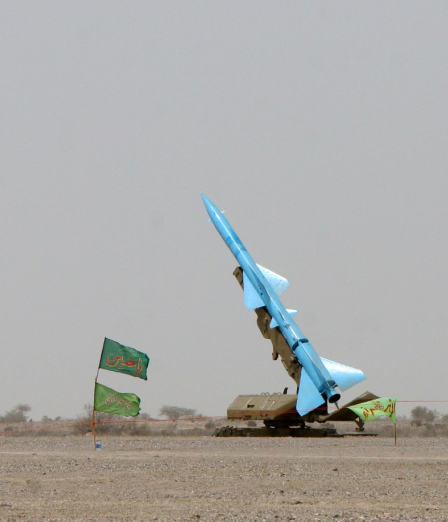
After the end of the Iran-Iraq war, Iran’s military-technical cooperation with China in the area of air defense continued. Thanks to Chinese support, in the second half of 90's, Iran began its own production of Sayyad-1 anti-aircraft missiles intended for use as part of the Chinese HQ-2J air defense missile systems.
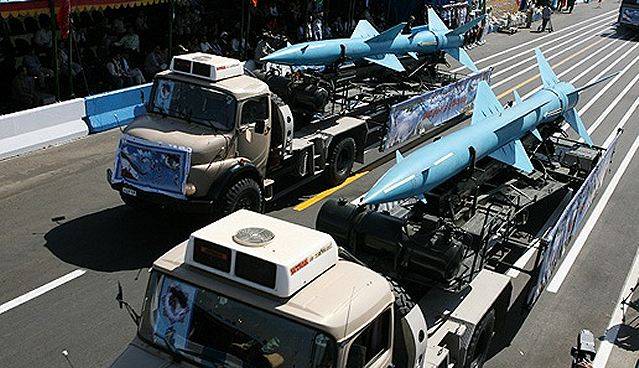
If you believe the information published in the Iranian media, the firing range of the Sayyad-1 missile system has been increased to 60 km, which significantly exceeds the range of the controlled flight of the original Chinese-made missiles. At the same time in Iran for its Sayyad-1 missiles developed its own fragmentation warhead weighing 200 kg. According to unconfirmed information, part of the upgraded missiles, in the 21 century, was equipped with a cooled IK GOS, which is activated on the final part of the trajectory, which increases the probability of hitting the target.
Simultaneously with the development of the production of anti-aircraft missiles, overhaul and modernization of the existing HQ-2J air defense systems, the Isfahan University of Technology based on the YLC-8 station (Chinese version of the P-12 radar) created a Matla ul-Fajr radar with a detection area up to 250 km. Subsequently, the radar Matla ul-Fajr-2 and Matla ul-Fajr-3, with a detection range of 300 and 400 km, were adopted by the radio-technical units of the Iranian Air Defense.
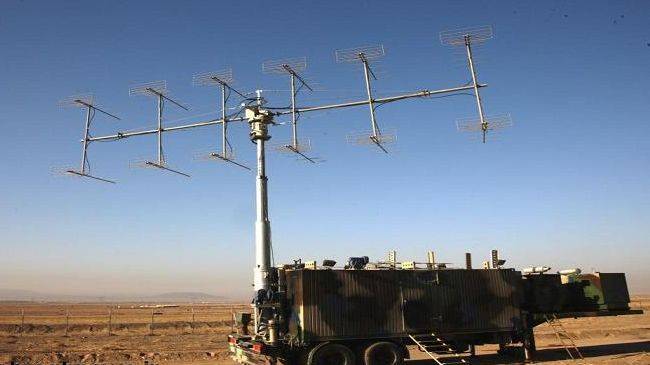
However, the understanding that anti-aircraft systems with missiles and guidance equipment built on the basis of technical solutions laid down in the late 50s was hopelessly outdated, led to the refusal to further improve the NQ-2 air defense system. Liquid missiles and weakly protected from modern means of electronic suppression guidance station can be relatively effective in local conflict aviation countries that do not have modern RTR and EW facilities. However, taking into account the fact that the USA, Israel and Saudi Arabia are considered as the main opponents in Iran, outdated Chinese-made air defense systems are unlikely to be effective against the air attack systems available to these states.
In addition, air defense missile systems with liquid missiles have always been much more complicated and expensive to operate than complexes with solid-propellant missiles. Increased danger during refueling and draining of fuel and oxidant requires the use of calculations of skin protection and respiratory protection and strict adherence to technology and fire safety measures. In this regard, after the deployment of modern Russian-made C-300PMU2 anti-aircraft missile systems and the start of production of its own medium-range air defense systems, over the past few years, the number of HQ-2J air defense systems in Iran has significantly decreased.
The C-75 anti-aircraft missile system, the first versions of which appeared 60 years ago, largely predetermined the development paths of the air defense troops and had a significant impact on the course of local conflicts in the 20 century. Although the C-75 and its Chinese counterpart HQ-2 already in many ways do not meet modern requirements, these complexes remained in service in Vietnam, Egypt, Iran, Kazakhstan, Kyrgyzstan, PRC, DPRK, Pakistan, Syria and Romania. However, due to the development of the resource, high cost, complexity of operation, as well as unsatisfactory noise immunity, the seventy-fifths and their Chinese clones will soon be replaced in combat duty with more advanced anti-aircraft missile systems.
Talking about the Chinese HQ-2 air defense missile systems, it is impossible not to mention the tactical missile created on the basis of the missile defense system designed to engage ground targets. As is known, before the cessation of military-technical cooperation with the Soviet Union, a small amount of single-stage liquid-propelled submarines R-629FM was supplied to China along with the diesel-electric missile submarine pr.11. Although in the USSR there was a land mobile modification of this R-11M rocket, with a launch range of up to 170 km, in the People's Republic of China during the years of the Great Leap, they did not create their own tactical missile on its basis. Before the start of the 90-x, the PLA did not have its own operational-tactical missile system. In the middle of 50, Soviet P-2 ballistic missiles with a launch range of about 600 km were produced in the People's Republic of China under the designation DF-1 (Dongfeng-1 - East Wind-1). However, this rocket, which was the development of P-1 (Soviet copy of the German V-2), worked on alcohol and liquid oxygen could not be stored for a long time in the filled state and by the beginning of the 60's was hopelessly outdated. In the first half of 80-x, in connection with the development of the resource, it was decided to convert part of the Chinese anti-aircraft missiles used in the HQ-2 air defense system into operational-tactical ones. As part of the R & D Project 8610, a ballistic missile DF-7 (Dongfeng-7) with a launch range of up to 200 km was created on the basis of a missile defense system. Due to the use of a compact inertial guidance system, it was possible to free up additional internal volume and install a more powerful high-explosive fragmentation warhead. The acceleration characteristics of the rocket increased due to the use of a more powerful solid-fuel accelerator of the first stage. Apparently, OTP DF-7 was used in very small quantities in the PLA, and most of the obsolete HQ-2 SAM systems were shot at test sites during test and training launches or converted into aerial targets. According to information published in Western sources, DF-7 tactical missiles under the designation M-7 were exported to the DPRK, Pakistan and Iran. According to Global Security experts, these countries did not even transfer the missiles themselves, but the technical documentation and, at a certain stage, some of the details, which make it possible to quickly convert existing missiles into PRPs.
So according to American data, the first 90 OTR M-7 arrived in Iran in 1989 year. In 1992, Iranian enterprises began mass production of the rocket, which received the designation Tondar-69. According to the Missiles of the World resource, as of 2012, Iran had 200 missiles Tondar-69 and 20 mobile launchers. Iranian representatives said that this rocket has an 150 km launch range and an 150 KVO. However, for a missile with a primitive inertial control system, such accuracy is unattainable.
The use of an operational-tactical missile complex, which differs little from an anti-aircraft missile, reduces the cost of production and maintenance, facilitates the training of personnel. But at the same time, the effectiveness of such weapons is highly questionable. The missile carries a relatively lightweight warhead, not powerful enough to effectively defeat protected ground targets. The large dispersion from the aiming point makes its use justified only for large area targets located in the front-line strip: airfields, transportation hubs, cities and large industrial enterprises. At the same time, separating the first solid-fuel stage when a rocket is flying over the location of its troops may be dangerous. Preparing a rocket engine for combat use is quite a complicated process. Since the transportation of a fully fueled rocket over long distances is not possible, refueling with an oxidizer is carried out in close proximity to the launch position. After that, the rocket from the transport-loading vehicle is transferred to the launcher. It is clear that the rocket battery, which includes bulky conveyors and tanks with flammable fuel and caustic, inflammable combustible substances in the frontal strip, is a very vulnerable target. At present, the Tondar-69 missile system clearly does not meet modern requirements, its combat and service and operational characteristics are unsatisfactory.
In 2015, the Yemeni Hussites and units of the regular army fighting on their side presented a new tactical missile Qaher-1. According to the information released by the TV channel Al-Masirah, the new rocket was converted from the Zour missiles used in the C-75 air defense system. From 1980 to 1987, South and North Yemen received the 18 S-75M3 Volga and 624 B-755 / B-759 missiles. Reported that the work on the modification of the missiles were carried out by the department of the military industry of the army and people's committees. Western experts believe that the Yemeni Qaher-1 are created on the model and likeness of the Iranian Tondar-69, and it was from Iran that the onboard control equipment, contact fuses and means of topographic binding were supplied.
In 2017, Yemeni television showed footage of Qaher-M2 rockets. The stated launch range of Qaher-М2 is 300 km, which according to expert estimates can be implemented by introducing a more powerful starting accelerator and reducing the mass of the warhead to 70 kg. In total, the positions of the forces of the Arab coalition led by Saudi Arabia, the Hussites launched up to 60 Qaher-1 and Qaher-M2 missiles. The most well-known incident involving the use of this type of missile was the attack of the Khalid bin Abdulaziz airbase in the province of Asher in the south-western part of Saudi Arabia. Saudis said that most of the Yemeni OTR was intercepted by the Patriot air defense system or fell in desert areas. In turn, the Iranian news agency FARS reported: "The shelling caused significant losses to the Saudi army."
Based on:
http://bmpd.livejournal.com/257111.html
https://www.globalsecurity.org/military/world/iran/sayyad-1.htm
https://www.armyrecognition.com/iran_iranian_army_missile_systems_vehicles_uk/sayyad-1_ground-to air_missile.html
https://theaviationist.com/2012/01/04/sayyad/
http://www.ausairpower.net/APA-HQ-9-12-Battery-Radars.html
https://www.globalsecurity.org/wmd/world/china/m-7.htm
https://legacy.blisty.cz/art/43707.html
https://imp-navigator.livejournal.com/404797.html
https://missilethreat.csis.org/missile/tondar-69/
https://defence.pk/pdf/threads/iranian-missiles-news-and-discussions.227673/
https://missilethreat.csis.org/missile/
https://breakingenergy.com/2017/11/16/countering-irans-missile-proliferation-in-yemen/
http://en.farsnews.com/newstext.aspx?nn=13940922000452
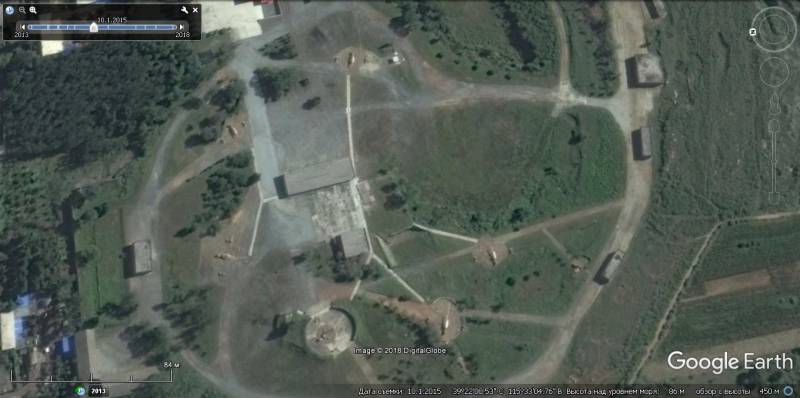
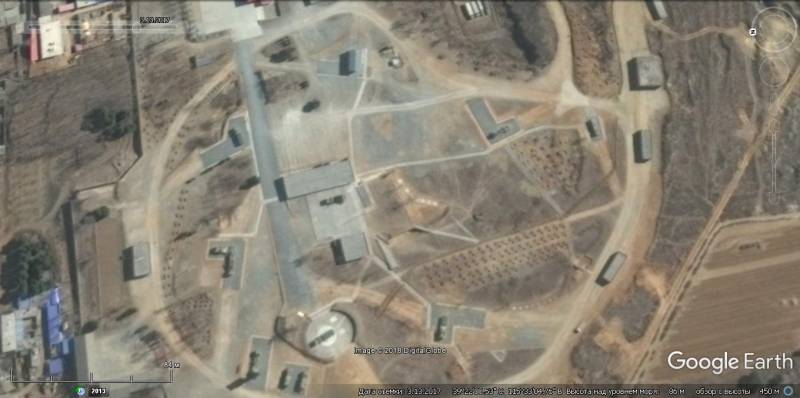
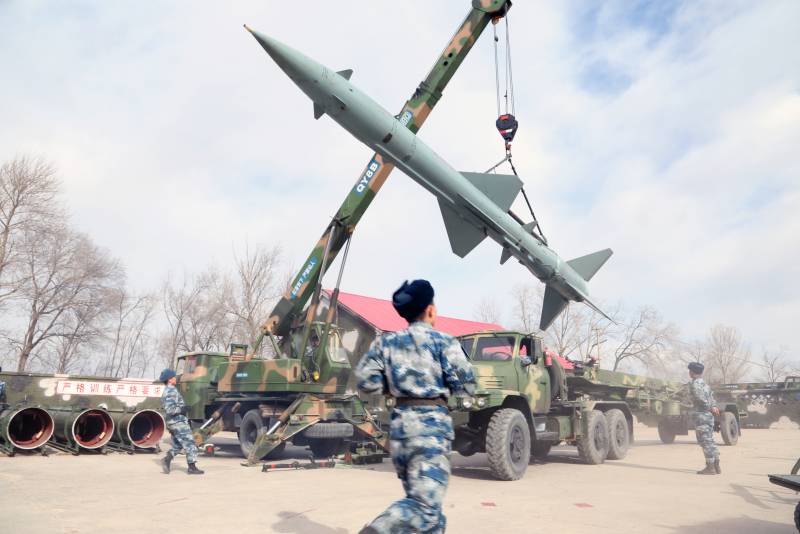
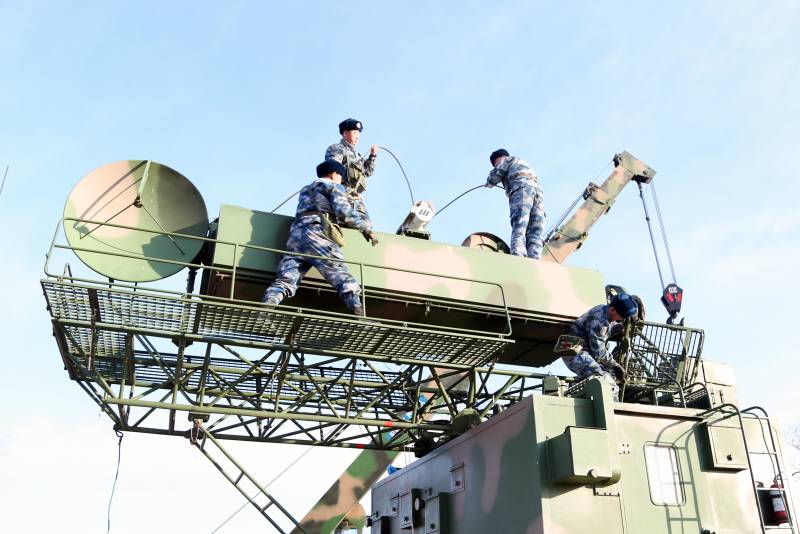
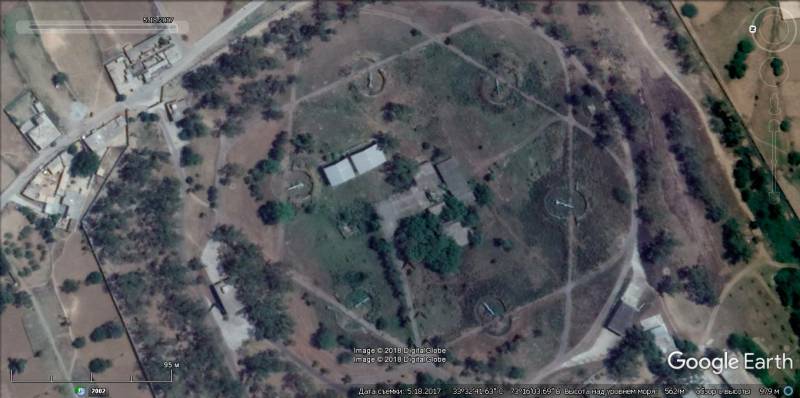
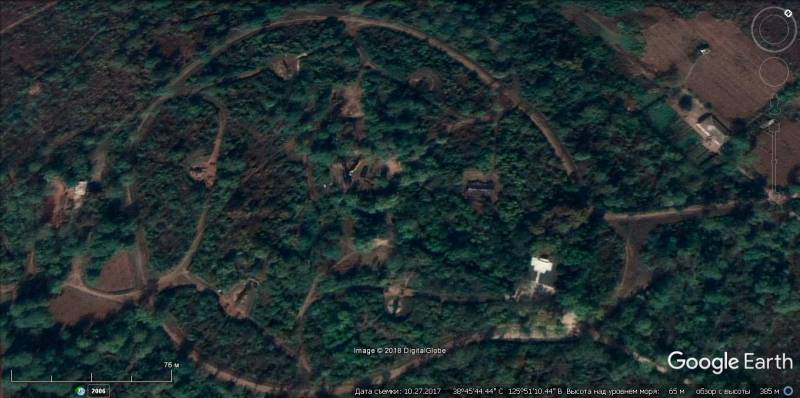
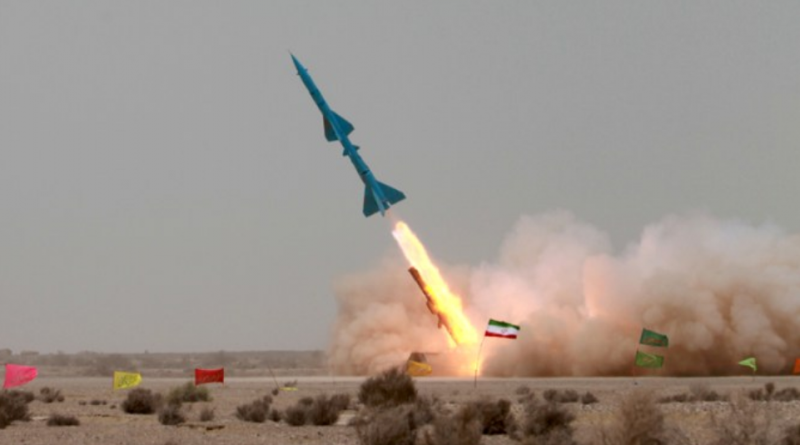
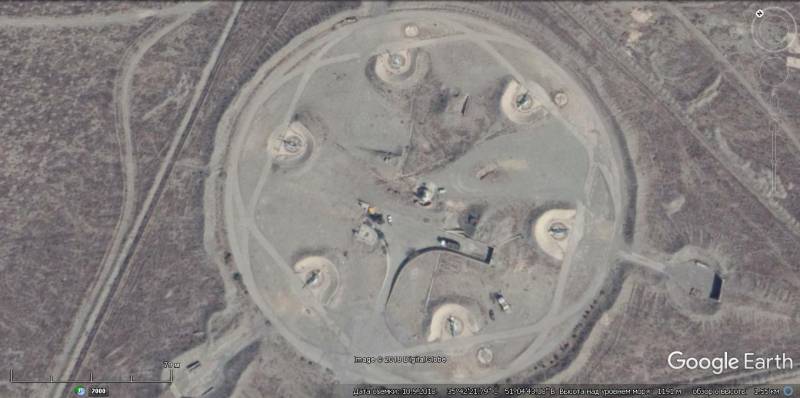
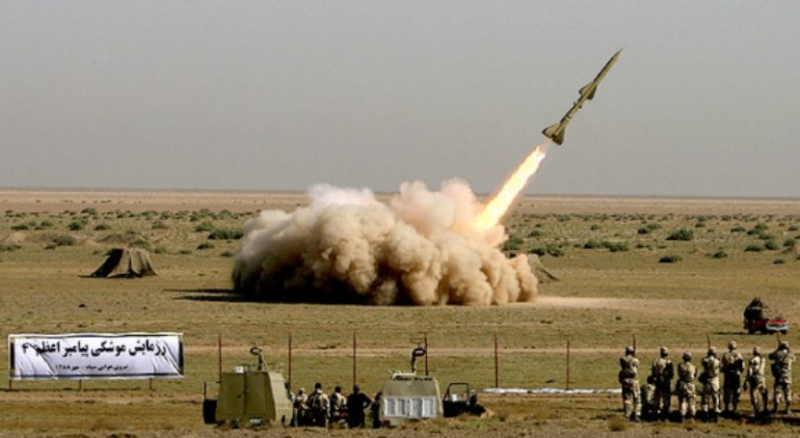
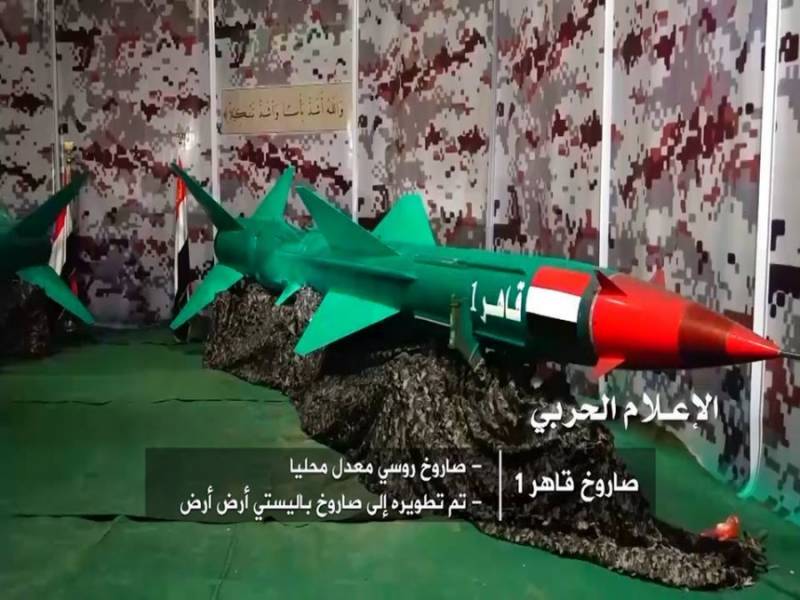
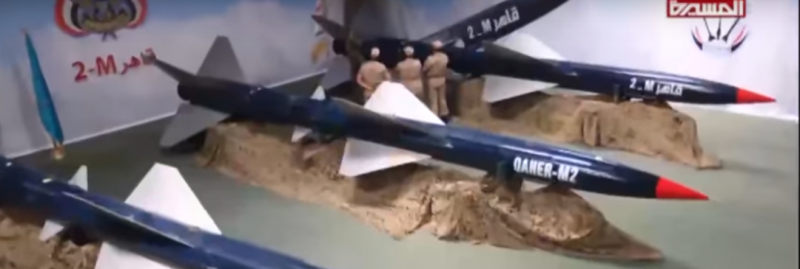
Information